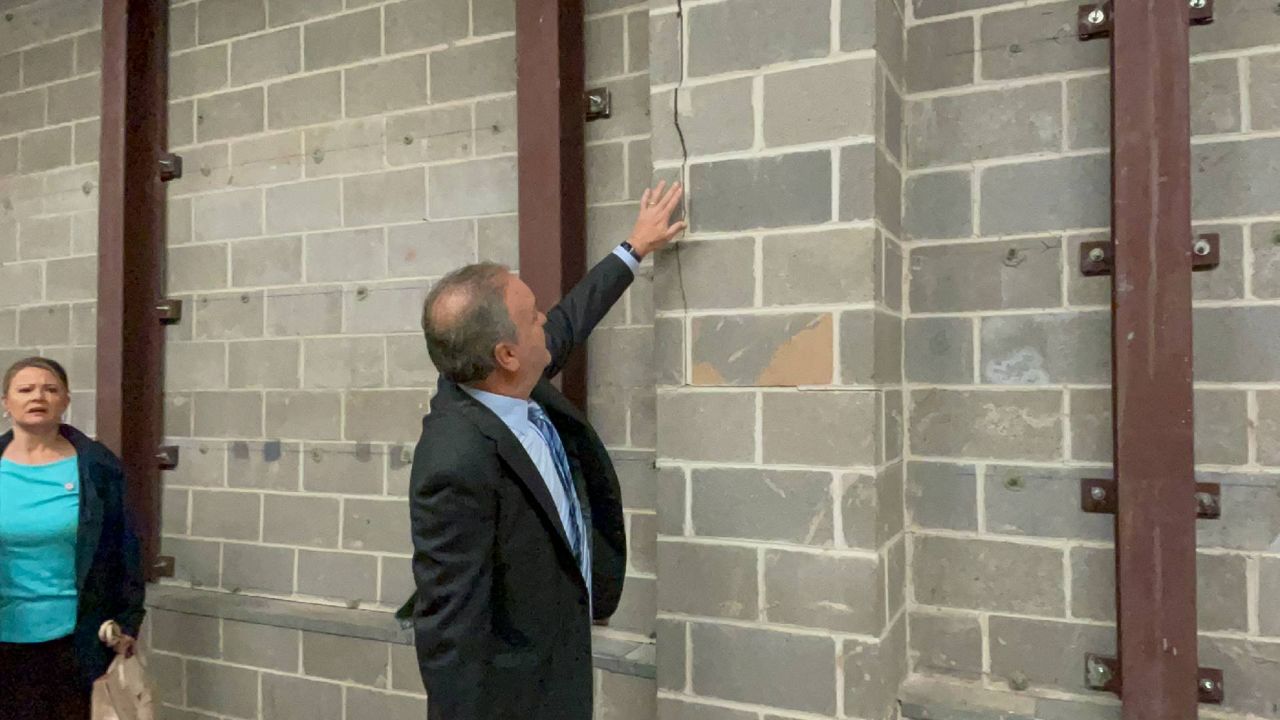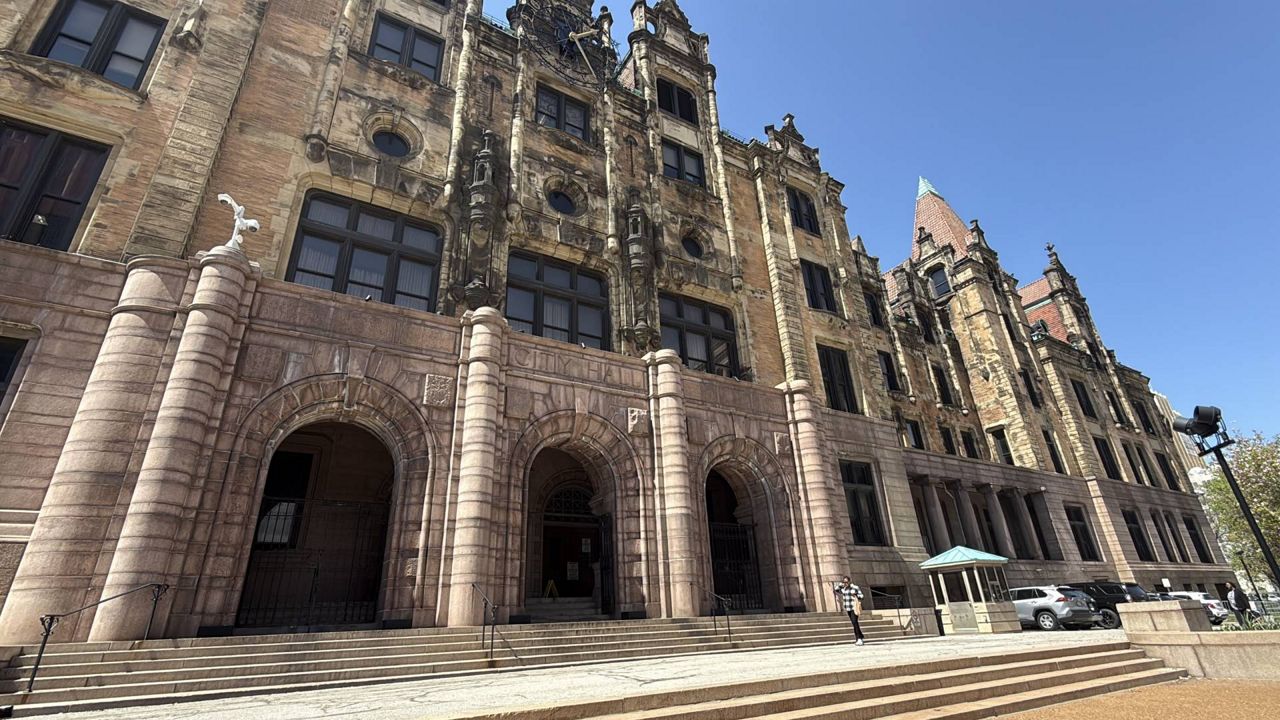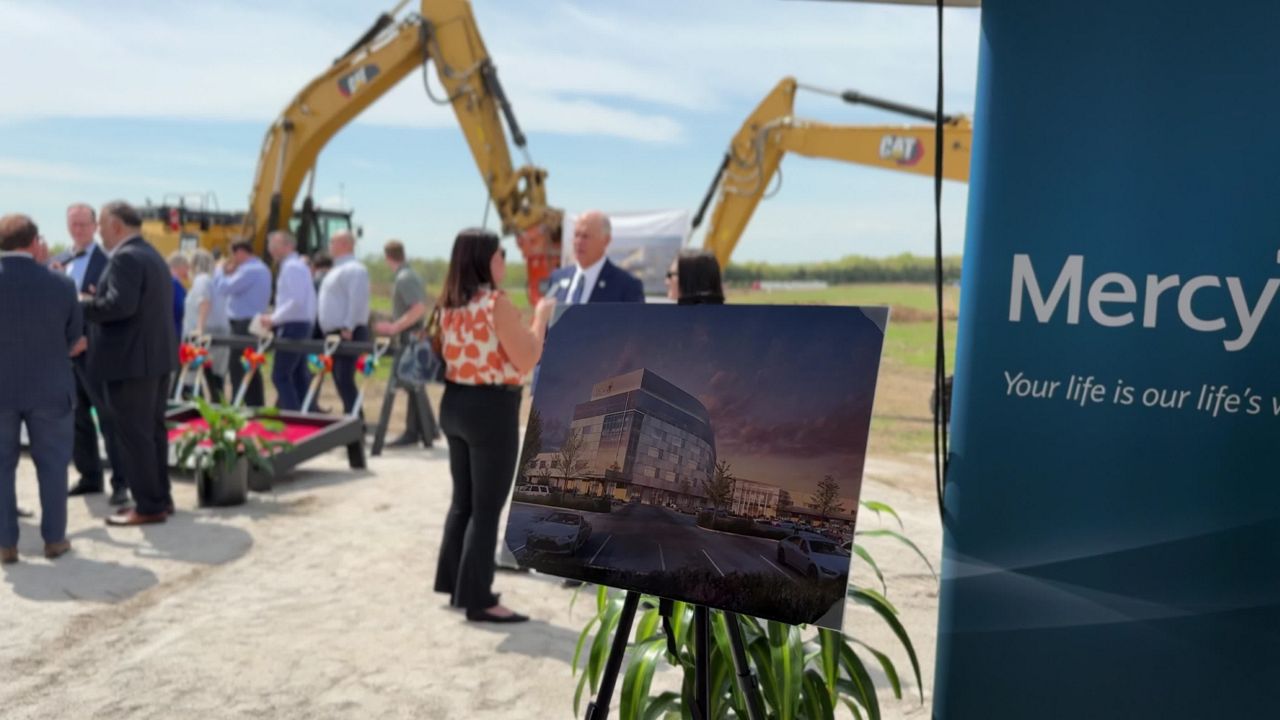CLAYTON, Mo.— St. Louis County Executive Sam Page and the St. Louis County Council appear miles apart on what to do about the county’s aging administrative building and how quickly action needs to be taken as November’s election and a 2028 deadline grow closer by the day.
The Lawrence K. Roos building, which houses county government operations in the county seat, opened in 1974. Thanks to a 2016 update of fire codes in the city of Clayton, all high-rise properties face a Jan. 1, 2028 deadline to be retrofitted with fire sprinklers, or face daily fines of $1,000 and condemnation.
The Page administration has suggested solutions ranging from $175 million for sprinklers and asbestos, lead and mold removal along with water leak fixes, to their preferred option–a $562 million plan to build a new facility that would also house county police and funded by what would amount to $69 annual tax increase on a home worth $250,000.
The proposals have been made in a series of meetings with staff and consultants, but little if any face-to-face negotiation between the principals.
Tuesday, Page said time is running out if the county wants to put a question before county voters in November that would fund construction of a new complex. He is also concerned about having time to make alternative plans for county government functions in the event the existing building has to be torn down or if leased space has to be located and built out. The last part alone, he said, would take two years.
While some functions could shift to satellite offices or locations outside of Clayton, administrative offices, county council meetings and county attorneys are among those areas that would need to be based in the city.
After a news conference with reporters, Page and his aides took media on a guided tour of the 197,000 square foot Roos building, showing structural issues years in the making, and some damage found just last week.
Monday night’s storm brought water that leaked into the basement, pooling not far from the electrical grid that powers the building and the county’s justice center.
“The fire code is just part of the problem. Trying to get the city of Clayton to relax a fire safety standard that’s been in place for twelve years is a big ask. Trying to stay in this building for more than another 3 years probably isn’t very thoughtful,” Page said.
Page has found bipartisan resistance to the proposals on the County Council. Chairwoman Shalonda Webb, Democrat, has urged Page to first release federal funding promised to charitable organizations that Page has withheld due to budget cuts. Republicans, including Mark Harder and Dennis Hancock, who heard Page’s remarks Tuesday but didn’t go on the tour afterward, said they aren’t convinced a new building is necessary and hold Page responsible for how years of deferred maintenance have piled up.
“This building needs work. There’s no doubt about that. You saw the problems we have here. It’s over 50 years old and when we become 50, we tend to fall apart and so this building needs some attention, Harder said. “Issues have not been addressed over time, so now suddenly, it’s a crisis and instead of chipping away at these different issues that you saw today, now we have a crisis.”
Hancock says the council needs to see bids on what the work to fix the sprinkler issue would cost, setting aside the other repairs the administration said would need to be done at the same time.
“The infrastructure for the sprinklers is already here. It’s just a matter of going up. I know it would be wonderful to be able to eliminate all of the asbestos in the building and all of the lead and all the other bad stuff that’s in the building," Hancock said.
He pointed out buildings in this era were primarily built with lead, asbestos and PCBs and there are people that are still working around them every day.
"There are ways to do it and without creating a health hazard and until we get serious about solving the immediate problem, the rest of it is just how much money can we spend,” Hancock said. “There are buildings all over this region that are older than this building that are functioning and functioning well.”
“We need to have a sit down and we need to communicate that way. We shouldn’t be communicating on a project this big through surrogates and third line representatives of the County Executive,” Harder said. “We need to sit down and hash all this out.”
No meetings are currently scheduled.









